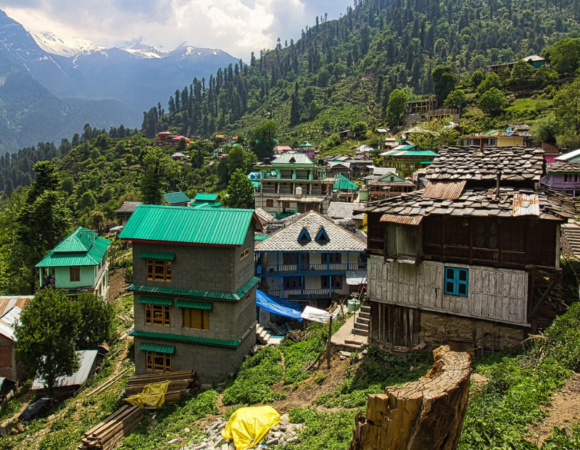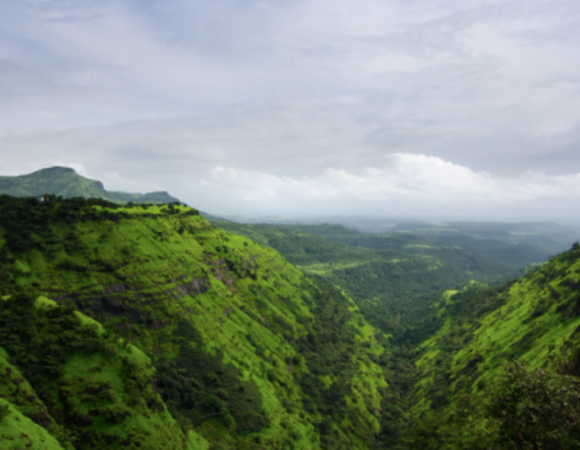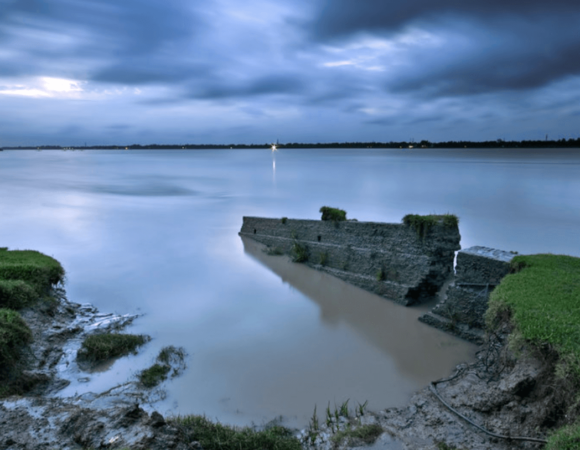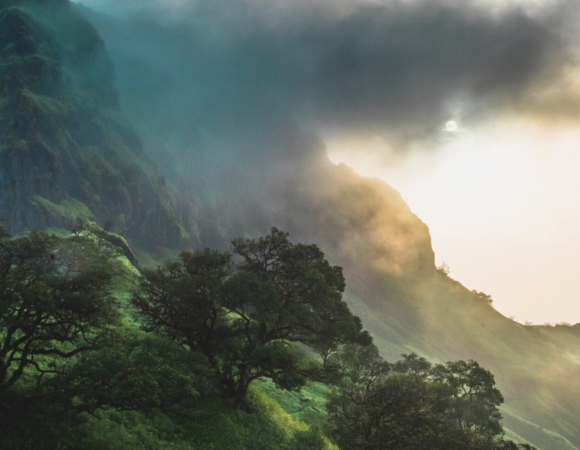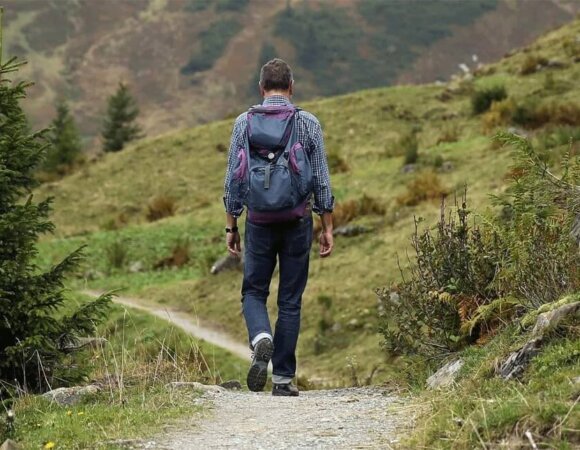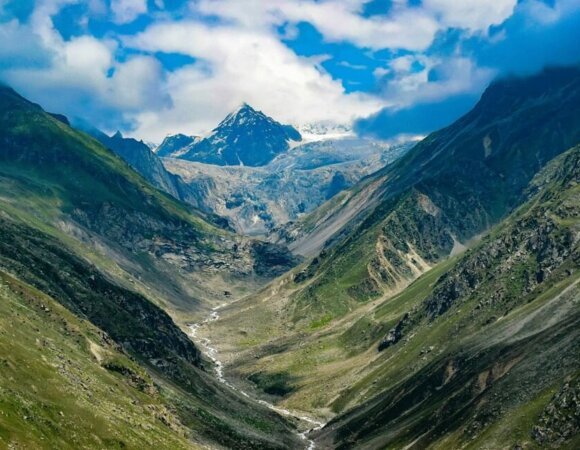A Comprehensive Guide to Basic Mountaineering Course
Table of Contents
ToggleIf you are an adventure sports enthusiast, you must have mountaineering somewhere on your bucket list. And to fulfill that wish of yours, you must go through a basic mountaineering course, or BMC. not just for fun, but also teaches you various basic yet important skills for mountaineering. Moreover, it also opens up a brand new and exciting career option for you.

Keep reading the article for more details about basic mountaineering courses. Also, we have something for you very special at the end of the article.
Objectives of a Basic Mountaineering Course
People who have recently come across this newfound interest in mountaineering have to accumulate as much basic knowledge as possible before getting initiated with the activity to understand what they are getting themselves into. The Basic Mountaineering Course provides this insight to them.

Some of the key targets and sole goals of the Basic mountaineering course available in India are the following:
- Teaching fundamental but extremely useful techniques for climbing on rock, moving on ice, and snow
- Providing rudimentary comprehension of both physical and mental aspects required for mountaineering and its related subjects, such as climate, basic navigation, prescription of drugs, mountain cleanliness, and many more, are covered in both theoretical and practical aspects.
- The instructors effortlessly devote themselves to instilling the proper and optimistic mindset toward mountaineering. They want you to view this exercise as an art form rather than just fun or adventurous activity. They even go as far as providing individuals proper reading materials and literature that are useful for mountaineering.
- Motivating people from all walks of life to strive for greater things.
- As we already know, the environment is different in higher altitudes which compels the human body to react differently. The objective of this course is to provide proper training so that the human body is comfortable even at such high altitudes.
- Training the human body so much so that it becomes resistant to fatigue, cold and hunger.
Basic Mountaineering Course Institutes
There are mainly four institutes recognized by the IMF (Indian Mountaineering Foundation) that provide basic mountaineering courses in India, namely:
1. Nehru Institute of Mountaineering, Uttarkashi, Uttarakhand
It was set up in the year of 1965 and is one of the most well-known institutes of mountaineering in India.

2. Himalayan Mountaineering Institute, Darjeeling, West Bengal
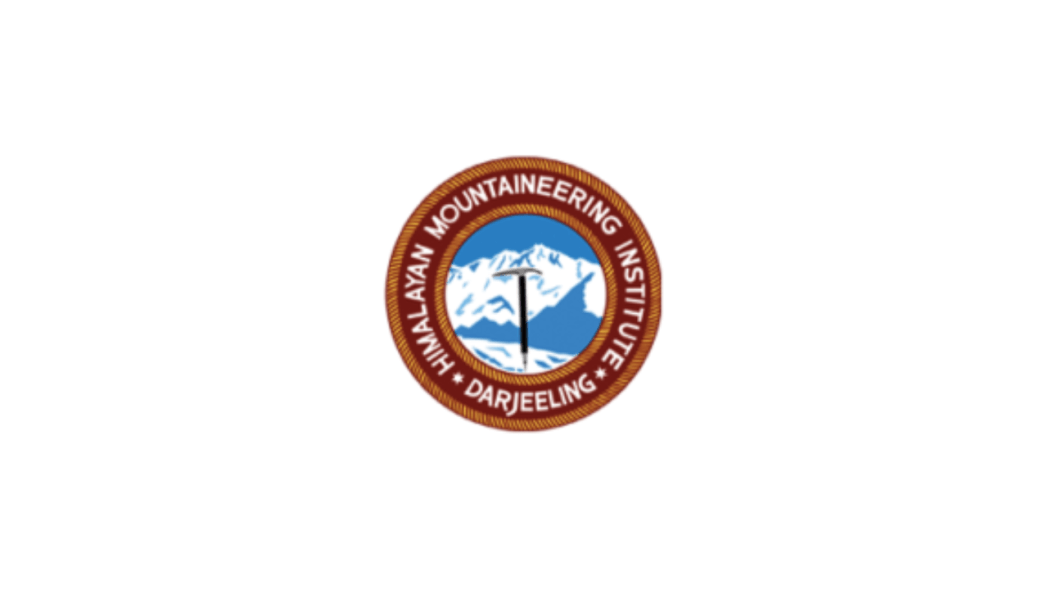
HMI was set up in 1954 and is at a location that provides a very scenic view of Mt. Kanchenjunga which stands at 8,512 meters where when the sunrays first hit its tip it gives a golden hue to the peak.
3. Atal Bihari Vajpayee Institute of Mountaineering and Allied Sports, Manali, Himachal Pradesh

It was set up in 1961 and is, today, the largest sports adventure training center in India.
4. Jawaharlal Institute of Mountaineering and Winter Sports, Pahalgam, Jammu, and Kashmir
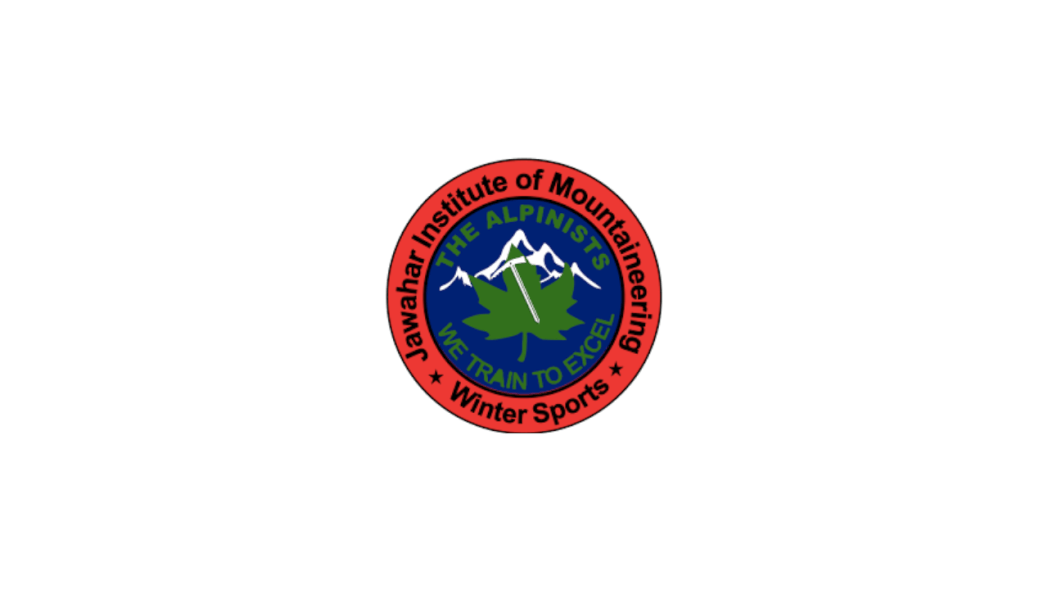
With its headquarters in Pahalgam, it was set up in 1961 at Aru, Jammu, and Kashmir. It has various sub-centers now in Nalthi Bhaderwah, Sanasar-Patnitop-Kud, Shey (Leh), and Gulmarg.
There are also several other institutes that provide the basic mountaineering course, although they are not recognized by the IMF, like:
1. National Institute of Mountaineering and Allied Sports, Dirang, Arunachal Pradesh
It was established in 2013 and was authorized as the first national institute to be allowed to conduct all land, aqua, and aero courses. The first basic mountaineering course conducted by this institute was from August 26 to September 30 in 2013.
2. Indian Institute of Skiing and Mountaineering, Gulmarg, Jammu, and Kashmir
With its main attraction on snow skiing, IISM was established in 1969, and now provides a variety of other adventure courses.
3. Pandit Nain Singh Surveyor Mountaineering Training Institute, Munsiyari, Uttarakhand
Located at an altitude of 2,200 meters in the Pithoragarh district of Uttarakhand, it is a newly established institute that is the second primary institute in Uttarakhand after NIM.
4. Sonam Gyatso Mountaineering Institute, Gangtok, Sikkim
Headquartered in Gangtok, Sikkim, it was first established in 1963 with its new complex inaugurated in December 2009. However, it only provides courses for Armed Forces.
5. High Altitude Warfare School, Gulmarg, Jammu, and Kashmir
This institute was also established for the Indian Army in 1948 and only provides courses to Armed Forces.
How to Prepare for a Basic Mountaineering Course
There are several preparations that one needs to take before starting out with the basic mountaineering course and that includes physical exercise as well as packing things from home.
Other than the items and equipment that will be provided by the institute, you will also need to carry a number of things from home like carrying extra t-shirts, underwear, and socks, even though there is a facility of laundry in the institute, it is always better to be safe than sorry.

For the food, you can carry your dry fruits and dry snacks, although you will be provided snacks for the 14 days that you are in the mountains. You can carry sachets of your skincare, shampoo, conditioner, deodorant, and paper soap or Dettol for hygiene. One should also pack a pair of good quality trekking shoes and extra money. It is also always better to carry ORS, a hydration pack, running shoes, a bandana, a power bank, napkins, tissues, and a couple of basic medicines, etc. just in case of an emergency.
For physical preparation for the basic mountaineering course, it is best to ask your gym trainer for a well-planned routine according to your desired goals (since it is not weight loss) two months prior to the day you start the course. Training should include lots of weight training, push-ups, pull-ups, and running with a heavy backpack on as that will be the most helpful for the course and in the future as a mountaineer. It is also a good idea to cycle through the exercises for comfort and would work better for the body.
Basic Mountaineering Course Duration in India
The length of the course differs by the institute, but it typically lasts from 24 days to 28 days and provides you with appropriate training to learn the techniques on rock, ice, and snow and necessary lectures related to mountaineering. The program is designed so that both beginner and intermediate climbers have an equal chance to improve fundamentals in all elements of mountain climbing, glacier climbing, and snow movement.
The general schedule of NIM (Nehru Institute of Mountaineering), which is the most renowned mountaineering institute in India recognized by the IMF (Indian Mountaineering Foundation), is of 28 days and is divided into four parts: 2 days for Introduction (i.e. Day 1-2); 9 days for Rock-craft (Days 3-11); 14 days for Snowcraft, Ice-craft, and Height Gain (Days 12-25), and lastly 3 days for Written Graduation Test (Days 26-27) and Dispersal (Day 28).
Prerequisites for the Basic Mountaineering Course
To enlist in the institutes, one must be at least between 18 years to 40 years of age and in good physical condition with no major injuries or heart conditions, or surgeries. The instructors will ask you to run a 5-8 km track on a routine basis, which is why age and muscular stamina are important factors in learning mountain climbing skills.

Individuals are also required to submit a form with a lab section on it at the time of registration. This section consists of various blood tests and urine tests. The reports of these tests are then required to be taken to a doctor who will then fill the section according to the reports.
Required Equipment for BMC
Mountaineering courses require certain equipment and clothing to keep you safe and secure while learning the skills for this difficult activity. However, the equipment is provided by the institutes only.
The institute will supply you with
- Sleeping Bag
- Water Bottle
- Feather Jacket
- Good Pair of Snow Boots
- Mountaineering Boots
- Bag Pack, and So on.
Apart from these items, you will also receive the necessary outfits for elevated climbing as well as an appropriate rock-climbing kit.
After the completion of the course, you are required to return all the equipment that you have borrowed from the institute.
Besides these, there are also gears like ropes, artificial anchor, and carabiner which is a metal ring that is latched onto an anchor through which the rope can be dragged. Other pieces of equipment include harnesses, belay devices, crevasse rescue equipment, ice axes, mountaineering gloves, avalanche transceiver, knives, pulleys, and basic materials which will help in building fire.
The course structure of the basic mountaineering course (BMC)
The course structure of a basic mountaineering course in every institute lasts between 26 days to 28 days and the said course of time is divided into the following parts of training:
1. Rock Climbing Training – 10 days
On the very first round of training, individuals are asked to get up early in the morning near 5:30 am, and are sent for the morning exercise including jogging, squats, high jumps, bridge, and running; and later, breakfast.
After breakfast, the rock-climbing training begins which consists of learning methods like rappelling, shoulder rappelling, jumaring, etc. which are the foundation of rock climbing. By using various methods, you can learn how to climb the cliff and subsequently descend it by rappelling. Individuals are also taught how to use their equipment.
2. Snowcraft Training – 3 days
The objective of this training is to teach how to self-arrest while sliding and walking on snow. You will receive instruction from your instructor on how to use the tools and clothing required for snow crafting. The same routine is followed for the next three days.
3. Ice-Craft Training – 3 days
You will practice using your crampons and ice axe, as well as how to climb up the ice wall, and rescue yourself from a crevasse, and from self-arrest, during this training session, which will again continue for the next three days.
4. Height Gaining and Survival Night
In this training, you will cover a height of 11,000 feet to 16,000 feet in 6 hours. After that you trek back to your tent. But here’s not the end. You are not allowed to move inside the tent nor to use sleep bags. This training might bring out a few health issues in people with no sleeping bag and tent along with an extremely low temperature. However, all of the hardship is to increase one’s survival skills which is an immensely significant skill for a mountaineer to have.
5. 1 Day Break
One day of break is given to individuals to spend time with their friends, go shopping, and get ready for the next day. This one-day break is also called Adam Day,
6. River Crossing Training
In this session, you are taken to the riverside to see the rapids of the river and you would have to cross the river with high flow. You will learn various techniques to cross the river without any difficulty.
7. Climbing Exam
After completing rock field training, river crossing training, and ice craft training, you will gain knowledge of rock-climbing techniques thus the trainee must climb a boulder using correct techniques, and if you do not finish this climbing test successfully, your grades will suffer.
8. Examined in writing
This will be the final day of your basic mountaineering course, and you will be required to take a written examination. The exam questions will be based solely on your training experience, so you will need to write down everything you have managed to learn in the field. The questions are usually MCQs, one-liners, fill-in-the-blanks, and name the following so there is no need to worry about it as long as you concentrate on the training well.
9. Ceremony of Closure
The closing ceremony is a platform where everybody is praised with certificates and mountaineering badges, and it’s one of the best moments of your 26-day training period. Those who wish to dance, sing, or perform a skit are welcome to do so following the closing ceremony. If you want to spend one further night with your fellow trainees and reminisce about your experiences, you are welcome to stay up overnight at the institute.
Read more: Mountaineering Course
Mountaineering as a career
Now, as we promised, here is the thing. As we have already introduced to you the basic mountaineering course, you must also be aware of the career options you can opt for. It is very important to understand the scopes you have and set your goals for an exciting and bright future.

Mountaineering is gaining more and more popularity with the passing of time due to the increasing popularity of travel companies, social media, books, and television. There are also several informative videos and documentaries shared on various video-sharing websites making people keener and keener to visit the mountains and experience them.
However, many people are going trekking or adventure camps as compared to the number of people taking up mountaineering courses. This is because, up to a certain level, trekking could be considered a leisure activity while pursuing mountaineering puts an enormous amount of mental and physical stress. Although, people not being aware of the career opportunities in the field of mountaineering could very well be another of the various reasons. There is also the fact that one needs to invest a significant amount of time to become a certified mountaineer, though the pays are quite high.
Some of the fields that mountaineering provides the scope for are given below:
- Mountain Guides have to lead their clients to the summit while taking care of their travel, food, equipment, and safety along the way. Mountain Guides also join expeditions in their spare time. They are not paid well in expeditions initially; it increases with experience.
- People who are certified in mountaineering from the National Cadet Corps (N. C. C.) or have Military backgrounds are people who are looking for opportunities to join the Army since Army men require good rock-climbing skills as they get high-altitude postings and need to be able to use their skills in times of security crisis.
- An Instructor can be anyone who teaches mountaineering at Mountaineering Institutes and Adventure Camps. One needs to clear all available mountaineering courses with the highest ‘A’ grade to be able to become an Instructor.
- Rescue Teams are always required in times of accidents and natural disasters. One needs to achieve an ‘A’ grade in their mountaineering course along with completing a Rescue and Search course in order to become a part of the Rescue Teams.
Conclusion For Basic Mountaineering Course
Mountaineering has been a common practice for as long as time has passed. People have been ascending mountains as a hobby since 1336. Although, the ascent of the Swiss Wetterhorn by Sir Alfred Will is considered the birth of mountaineering as a sport.

The benefits of mountaineering go beyond just your physical health. When you see the places with your own eyes, whose pictures many have seen, it makes you stand out in the crowd. The view is always worth the effort and pain that you will face along the way. You will be able to meet a wide spectrum of positive, strong, and confident people along the way.
They are all happy because that is what this sport does to people. It heals them both mentally and physically. You learn why people say “the mountains are calling” and why when they call, you must go. Climbing mountains will teach you patience and persistence, it will make you want to protect our environment even more and it will teach you about change and will prepare you for change.
Frequently Asked Questions about Mountaineering Courses
What do they teach in basic mountaineering course?
The Basic Mountaineering course at any institute is usually a combination of wall-climbing, rock-climbing, skiing, hiking, rappelling, ice craft, and several other adventure activities necessary to nail mountaineering.
How tough is basic mountaineering course?
The Basic Mountaineering Course is a pretty intense course and it requires a decent level of fitness before joining the course. The most important aspect that needs focus is your ability to carry a several kilograms of rucksack for a long distance. Experts say, running on the treadmill with an extremely heavy backpack helps in preparing for the course.
How can I prepare for basic mountaineering course?
The best way to start preparing for the course is to start training physically six months before enrolling for the course and going on a couple of treks beforehand to get the gist.
What qualities should a mountaineer possess?
Along with physical and mental strength, a mountaineer should also have survival skills, endurance and resilience.
How much does a basic mountaineering course cost?
In most institutes the basic mountaineering course fees vary from 15000 to 17000 rupees each.
How fit do I have to be for the basic mountaineering course?
No matter how prepared you are, you cannot be prepared enough for the course as intense as this. The course is designed in a way to make you feel challenged which in turn will help you better your survival skills. Thus, the best thing to do is to be your personal best.
Is there any physical fitness test at the institute?
No, they do not take any physical fitness test. They do take basic medical tests to figure out if you are physically capable of taking the course. However, it is always better to prepare yourself by getting fitter than you usually are.
What physical activity will they make you do at the institute?
The physical activities usually comprise of running 3-4kms; strength exercises like squats, push-ups, crunches, etc.; trekking and lots of climbing.
Is mountaineering similar to hiking?
Hiking mostly consists of trekking where they try to reach a number of summits of various hills and Mountaineering, although similar, deals with climbing the challenging mountains. Their similarities might overlap but mountaineering is a lot more strenuous and riskier.
Is running a proper way to prepare for mountaineering?
Running is definitively is good way to prepare for mountaineering but it is not enough as to prepare for the basic mountaineering course one should have a regimen that consists of a number of various exercises including strength exercises and running.
What is the difference between trekking and mountaineering?
If mountaineering is the highest level of difficult and hiking is the beginner level, then trekking would be considered somewhere in the middle. Trekking is similar to hiking, although treks are more arduous than hikes.


